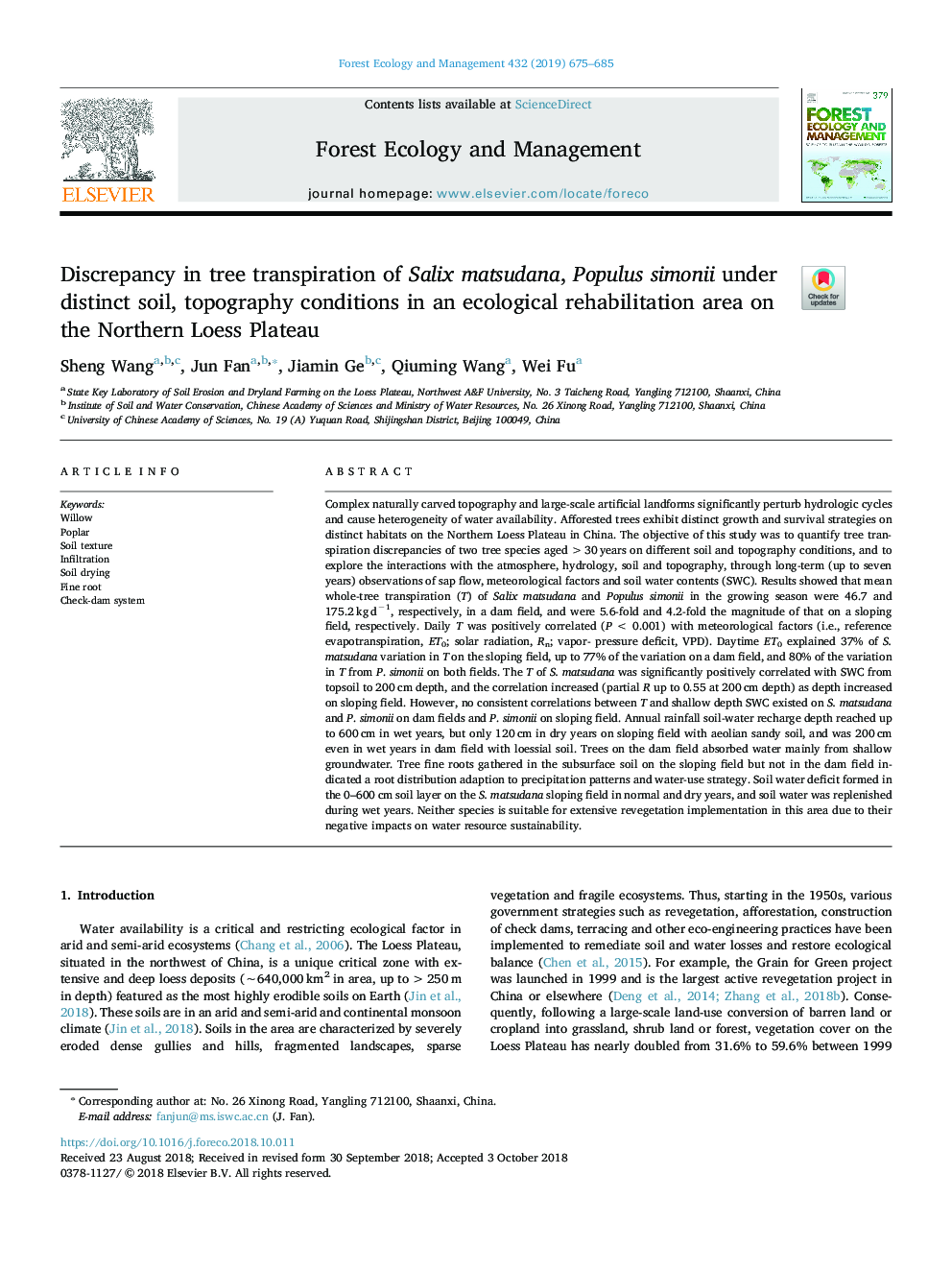| Article ID | Journal | Published Year | Pages | File Type |
|---|---|---|---|---|
| 11028402 | Forest Ecology and Management | 2019 | 11 Pages |
Abstract
Complex naturally carved topography and large-scale artificial landforms significantly perturb hydrologic cycles and cause heterogeneity of water availability. Afforested trees exhibit distinct growth and survival strategies on distinct habitats on the Northern Loess Plateau in China. The objective of this study was to quantify tree transpiration discrepancies of two tree species aged >30â¯years on different soil and topography conditions, and to explore the interactions with the atmosphere, hydrology, soil and topography, through long-term (up to seven years) observations of sap flow, meteorological factors and soil water contents (SWC). Results showed that mean whole-tree transpiration (T) of Salix matsudana and Populus simonii in the growing season were 46.7 and 175.2â¯kgâ¯dâ1, respectively, in a dam field, and were 5.6-fold and 4.2-fold the magnitude of that on a sloping field, respectively. Daily T was positively correlated (Pâ¯<â¯0.001) with meteorological factors (i.e., reference evapotranspiration, ET0; solar radiation, Rn; vapor- pressure deficit, VPD). Daytime ET0 explained 37% of S. matsudana variation in T on the sloping field, up to 77% of the variation on a dam field, and 80% of the variation in T from P. simonii on both fields. The T of S. matsudana was significantly positively correlated with SWC from topsoil to 200â¯cm depth, and the correlation increased (partial R up to 0.55 at 200â¯cm depth) as depth increased on sloping field. However, no consistent correlations between T and shallow depth SWC existed on S. matsudana and P. simonii on dam fields and P. simonii on sloping field. Annual rainfall soil-water recharge depth reached up to 600â¯cm in wet years, but only 120â¯cm in dry years on sloping field with aeolian sandy soil, and was 200â¯cm even in wet years in dam field with loessial soil. Trees on the dam field absorbed water mainly from shallow groundwater. Tree fine roots gathered in the subsurface soil on the sloping field but not in the dam field indicated a root distribution adaption to precipitation patterns and water-use strategy. Soil water deficit formed in the 0-600â¯cm soil layer on the S. matsudana sloping field in normal and dry years, and soil water was replenished during wet years. Neither species is suitable for extensive revegetation implementation in this area due to their negative impacts on water resource sustainability.
Related Topics
Life Sciences
Agricultural and Biological Sciences
Ecology, Evolution, Behavior and Systematics
Authors
Sheng Wang, Jun Fan, Jiamin Ge, Qiuming Wang, Wei Fu,
